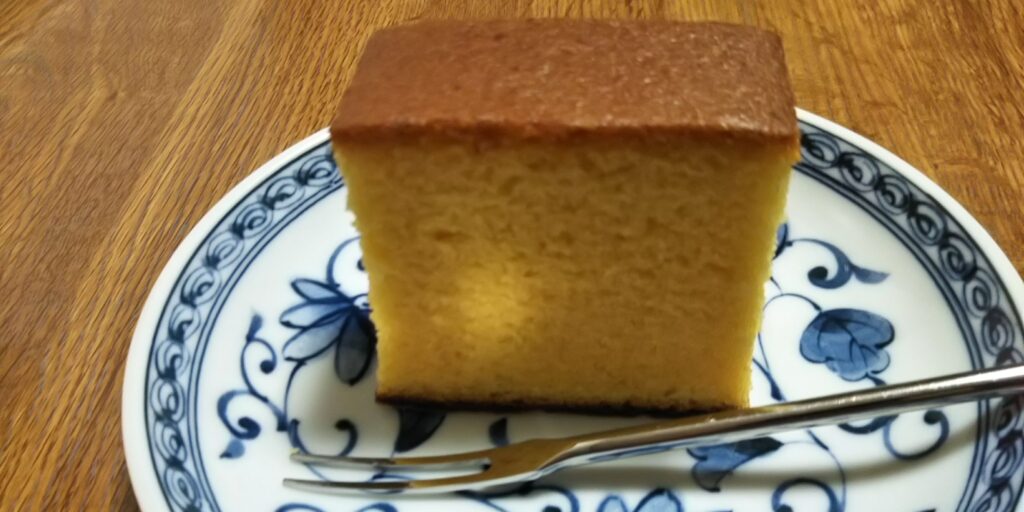Castella (Kasutera) is a popular Japanese sponge cake made of sugar, flour, eggs, and syrup. It is fluffy and moist and has good flavor and taste. It is often bought for a gift because it is regarded as one of high-class confectioneries.

■ Introduced by Portuguese
The cake is said to have been brought to Japan by Portuguese merchants in the 16th century. The Portuguese were the first Europeans to come to Japan. The name of the cake was derived from Portuguese Pão de Castela, meaning “bread from Castile”.
Originally the cake was not as same as today’s Castella. The cake could be stored for a long period of time to be useful for the sailors who were out on the sea for months.
■ History
In the 16th century, the Portuguese reached Japan and soon started trade and missionary work. Nagasaki in Kyushu, the southern island of Japan, was then the only Japanese port open for foreign commerce. So, castella is now a specialty of Nagasaki. The Portuguese introduced many then-unusual things, not only castella but also tobacco, pumpkins, and guns.
Since then until 19th century, castella has been an expensive dessert and cooked for special gifts for high class people, because it was not easy to have sugar in those days.
In the 20th century, the taste changed to suit Japanese palates. There are now many varieties made with ingredients such as powdered green tea, brown sugar, and honey. They may be molded in various shapes. For example a popular Japanese festival food is baby castella, a bite-sized version.
■ The first Japanese dictionary by Europeans
The Portuguese were the first to translate Japanese to a Western language. They made the “Japanese-Portuguese Dictionary” compiled by Portuguese Jesuit João Rodrigues and published in Nagasaki in 1603. The dictionary explained 32,000 Japanese words translated into Portuguese.
■ Portuguese words became Japanese
The Portuguese continued the trading and missionary work for about 50 years until the Edo shogunate employed the isolation policy in 1633 to shut the door to the world. So, the Portuguese influenced on Japanese culture, and some Portuguese words became Japanese. Here is a list of some of them which have survived until the present day.
(_____Japanese____)___(English)_____(Portuguese)
buranko___ブランコ____swing_________baloiço
jōro______じょうろ____watering______canjarro
kappa_____合羽________raincoat______capa
karuta____かるた______cards_________cartas
pan_______パン________bread_________pão
shabon____シャボン____soap__________sabão
juban_____じゅばん____undervest_____gibão
■■■
The Portuguese have exerted great influence on Japanese language and life.
By Eddy
■Reference
1. A Dictionary of Japanese Food by Richard Hosking, published by Tuttle
2. Castella (https://en.wikipedia.org/wiki/Castella) 2020.8.6

Comment